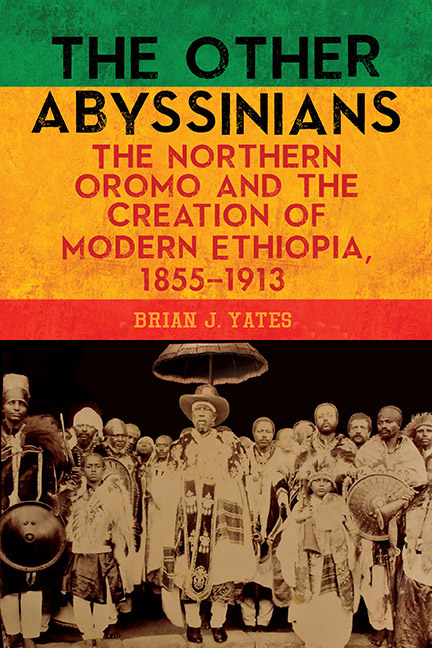Book contents
- Frontmatter
- Contents
- Preface
- Introduction: What about the Oromo Habäsha? Liberating Northern Oromo Experience from Competing Nationalisms
- 1 Cultural Backgrounds and the Habäsha State
- 2 In but not of: The (Re)Integration of the Wällo Oromo into the Habäsha Community
- 3 Menilek, Gobäna, and the Creation of Habäsha Shäwa, 1855–88
- 4 Recreating the Autonomy of Wällo: The Unions of Mikaél and Menilek
- 5 From Personal Relationships to a Centralizing State: Shäwan Ethiopia (1889–1913)
- Conclusion: The Oromo Habäsha in Modern Ethiopia
- Appendix A Guide to the Transliteration of the Ethiopic Script to the Latin Script
- Appendix B Glossary of Ethiopian Terms
- Appendix C Sample Interview Questions for Shäwa and Wällo
- Notes
- Bibliography
- Index
1 - Cultural Backgrounds and the Habäsha State
Published online by Cambridge University Press: 21 March 2020
- Frontmatter
- Contents
- Preface
- Introduction: What about the Oromo Habäsha? Liberating Northern Oromo Experience from Competing Nationalisms
- 1 Cultural Backgrounds and the Habäsha State
- 2 In but not of: The (Re)Integration of the Wällo Oromo into the Habäsha Community
- 3 Menilek, Gobäna, and the Creation of Habäsha Shäwa, 1855–88
- 4 Recreating the Autonomy of Wällo: The Unions of Mikaél and Menilek
- 5 From Personal Relationships to a Centralizing State: Shäwan Ethiopia (1889–1913)
- Conclusion: The Oromo Habäsha in Modern Ethiopia
- Appendix A Guide to the Transliteration of the Ethiopic Script to the Latin Script
- Appendix B Glossary of Ethiopian Terms
- Appendix C Sample Interview Questions for Shäwa and Wällo
- Notes
- Bibliography
- Index
Summary
This chapter introduces the legacy of Gondärine Ethiopia as well as key components of the culture and society of the highlands of Ethiopia. It defines and displays the importance of key political and religious titles as well as religious, political, and societal structures of the groups in the highlands. It argues that the Habäsha community is a syncretic cultural community that includes all of the cultural groups of the highlands and a combination of their cultural practices.
Highland Beginnings: Church and State
The Gondärine period (1600–1755) was marked by the slow decline of central authority and the rise in prominence of four separate provincial units, Gojjam, Tigray, Shäwa, and Wällo, the former Amhara. Central authority, which previously moved throughout the empire, was permanently housed in the city of Gondär by the Yäjju Oromo, who controlled the puppet emperors from Däbrä Tabor. This new permanent capital also accelerated cultural changes resulting from the concentration of religious, cultural, and political figures in one place. Ironically, this period is known more for local conflicts than for its urbanity. One could argue that without a permanent capital and its accompanying culture, the Yäjju might have remained outsiders. Authorities on the period link the provincialism that marks the Zämänä Mäsafent to the Gondärine period. He highlights three main features of the Gondärine period that started and exacerbated the fall of central authority: continued sectarian strife, independent territory acquisition by provincial nobles, and the rise in authority of the Ras Bitwäddäd (“the most loved Ras”), all elements implicitly devoid of ethnicity. This process is mirrored in the Oromo societies that moved north or west with titles like Moti or king. In the highlands, many became Ras Bitwäddäd.
Sectarian conflict arose for three reasons. The first important factor was the practice of polygyny: nobles and emperors of this period had many children by many different mothers, and there was no distinction between legitimate and illegitimate children. Even when there was a named successor, succession was often contested. Generally, the deciding factor was support from the powers behind the throne, which could mean the Ras Bitwäddäd or an informal alliance of political elites.
- Type
- Chapter
- Information
- The Other AbyssiniansThe Northern Oromo and the Creation of Modern Ethiopia, 1855-1913, pp. 17 - 36Publisher: Boydell & BrewerPrint publication year: 2020



